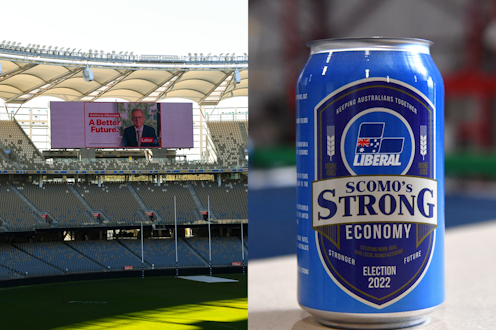Below the Line: How much are the parties spending on ads? And how come One Nation's Townsville candidate lives in Melbourne? – podcast
- Written by Benjamin Clark, Deputy Engagement Editor, The Conversation

On Monday May 9, early voting centres will open and Australians can start casting their votes for the federal election.
Increasing numbers of Australians are choosing not to line up for their democracy sausage on election day, opting instead to get it out of the way beforehand. In 2019, about 40% of Australians either voted early by visiting a pre-poll station (32.7%) or they filled out a postal ballot (8.5%).
So the next week is crucial for parties’ and candidates’ campaigns – can they convince enough persuadable voters before they cast their ballots?
In this episode of Below the Line, award-winning broadcaster Jon Faine and our regular panel of political scientists discuss how early voting is “truncating” political campaigns, by bringing forward the crucial vote-turning period.
This means that the campaign will intensify in the next week, says Anika Gauja. The parties will need to get their key messages out repeatedly. Early voting is one of the reasons the leaders may have agreed to two debates in the next seven days – on Mothers’ Day with Channel 9 in prime time and another again on Wednesday 11 May with Channel 7.
They also discuss whether the Reserve Bank’s recent interest rate hike will hurt Prime Minister Scott Morrison, or perhaps help him among mortage-free retirees. On the whole, polling expert Simon Jackman believes it represents a net-negative for the government, because there are more mortgage-holders in marginal seats.
The political parties’ advertising is also dissected. Spending on ads shot up in the last week, with Labor coming out on top as the biggest spender on social media.
Finally, they discuss preferences, campaign finance disclosures and the curious case of a candidate for Pauline Hanson’s One Nation party who lives 2,500 kilometres away from the electorate she’s seeking to represent.
Below the Line is a limited-edition election podcast brought to you by The Conversation and La Trobe University. The show is produced by Courtney Carthy and Benjamin Clark.
Correction: Jon states that the One Nation candidate for “Bob Katter’s seat in northern Queensland” lives in the Melbourne suburb of Pakenham, whereas the far-flung candidate Diane Pepe is actually contesting the seat of Herbert, which is adjacent to Katter’s seat of Kennedy.
Disclosure: Andrea Carson has received funding for research projects from Facebook.
Image credit: Lukas Coch/Mick Tsikas/AAP
Authors: Benjamin Clark, Deputy Engagement Editor, The Conversation



